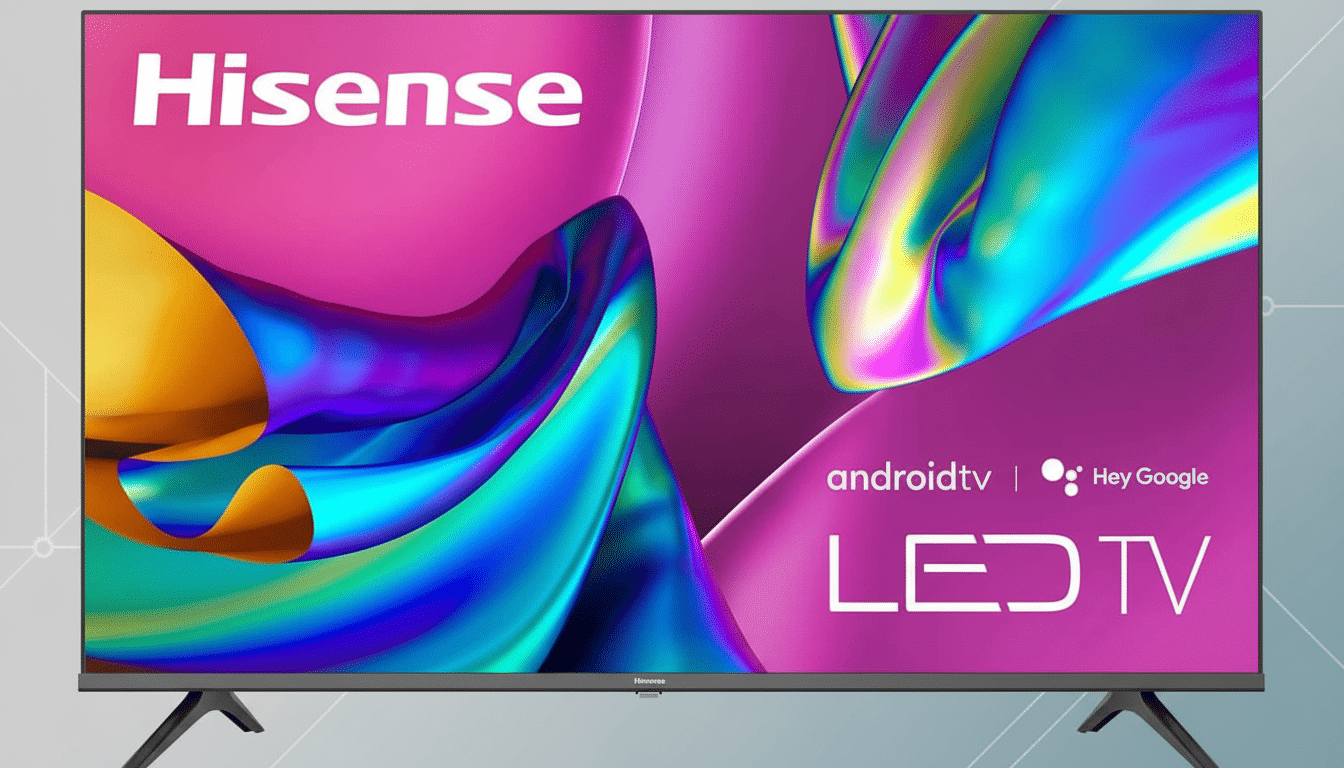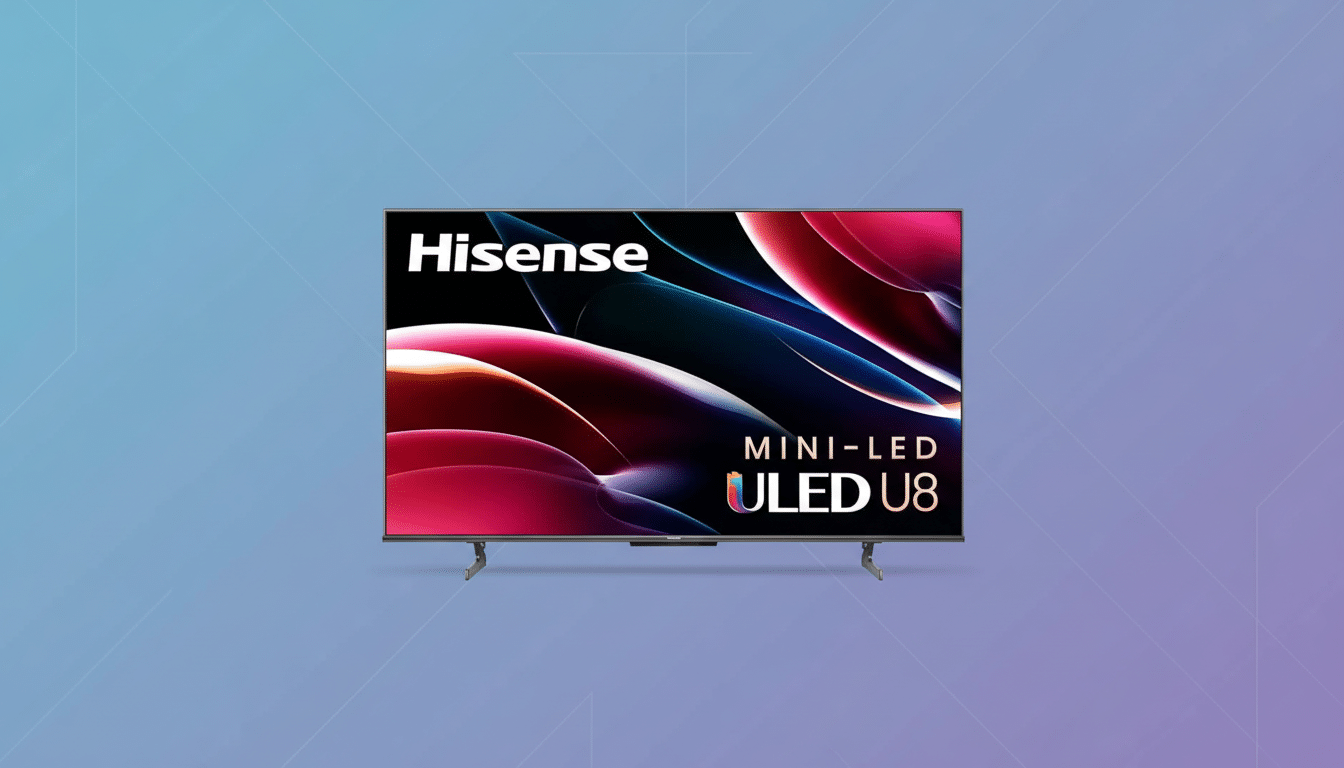Early Prime Big Deal Days discounts are already flashing across the TV departments with stand-your-ground offers from Hisense, Toshiba and other big guns in television production. If you were already holding out for a larger 4K set, then these early drops are more than teaser prices — they’re an opportunity to get access to features like Mini‑LED backlighting, 120Hz panels and built‑in streaming without paying premiums that usually come with launch week.
Why early TV discount deals matter to shoppers now
Retailers employ pre-emptive deals to drive demand and even out traffic, sometimes matching the best event pricing days before the rush. Industry trackers such as Adobe Analytics and Circana have regularly seen TVs among the most marked down electronics during key shopping cycles, and with dynamic repricing that can occasionally see standout models hit their floor even before the main event kicks off.
- Why early TV discount deals matter to shoppers now
- Early standout picks from Hisense and Toshiba
- What To Look For In A Discounted Big Screen
- What to pay now for 55 to 75-inch 4K TVs and OLEDs
- Smart TV platforms and privacy settings to review
- Gaming features to futureproof your next TV purchase
- When to pull the trigger on early Prime TV deals

Supply also plays a role. According to Display Supply Chain Consultants, the cost of LCD panels ebbs and flows over a year; during periods when costs are down and stock is plentiful, retailers apply volume-driven pressure with steeper cuts, especially on 55‑ or 65‑inch sets, the strongest demand categories. That’s why “early” can be as good as “peak.”
Early standout picks from Hisense and Toshiba
Hisense has turned into a value leader by pulling flagship‑style specs down to the midrange. Seek out ULED models with Mini‑LED backlighting (greater number of dimming zones for higher contrast), quantum dots for color and blazing HDR performance that can reach beyond 1,000 nits on step-up series like the U7 and U8 lineups. Many get 120Hz panels, two HDMI 2.1 inputs, VRR, and eARC — handy for living rooms that house a console and soundbar alongside the TV.
Toshiba’s Fire TV sets — including the popular C‑series — nail ease of use. That means 4K resolution, support for HDR and Amazon’s Fire TV interface without a separate streaming device. For casual viewers or a second room, they are perfectly capable everyday screens with voice control and a clean remote experience. And when they do dip, it’s usually below competing Google TV and Roku models from other brands.
Other noteworthy brands to keep your eye on in the early waves include TCL’s value-packed Q‑class Mini‑LED sets for big‑screen interests, LG C‑series OLEDs with exceptional black levels and gaming characteristics, and Samsung’s QLED models featuring high‑brightness performance for rooms that get a lot of sun. Discounts start to show up first in the 55‑ and 65‑inch sizes, and expand into the 75‑inch size and larger as inventory clears.
What To Look For In A Discounted Big Screen
Panel tech: OLED offers perfect blacks and elite uniformity for late-night movie marathons in the dark. Mini‑LED LCD sets give you excellent brightness and strong contrast between lighted and unlighted areas for mixed lighting. Your standard LED LCD can still be a superior value if you don’t care about excellent HDR performance.
HDR formats: Dolby Vision and HDR10+ give you scene‑by‑scene tone mapping; HDR10 is the field standard. If you watch a lot of movies, Dolby Vision compatibility is a tiebreaker.
Connectivity: HDMI 2.1 allows compatibility with next‑gen consoles, offering up to 4K/120Hz refresh rates and VRR. ALLM also auto‑switches to low‑input‑lag Game Mode. For audio, you’ll want eARC to send lossless Dolby Atmos to a soundbar or AVR. The HDMI Forum’s specs are a handy resource if you want to check capabilities.
Brightness and movement: Mini‑LEDs and high‑end QLEDs will typically hit 1,000–2,000 nits for daylight‑filled living rooms. 20ms input lag should be a threshold for gamers, while you’ve got black frame insertion/motion interpolation available to you if needed.

What to pay now for 55 to 75-inch 4K TVs and OLEDs
Prices change every day, but here are some useful guardrails from recent shopping seasons and analyst reports.
For mainstream 55‑inch 4K LED sets, particularly during promotional periods, it’s not unexpected to see strong pricing territory established in the low‑$300s. You can regularly find a good 65‑inch LED in the low $400s. Mini‑LED at 65 inches often falls into the $700‑$900 range, depending on dimming‑zone quantity and peak output. OLED prices have crept lower; a 55‑inch C‑class model in the sub‑$1,100 range (and a 65‑inch under ~$1,600) are generally “buys” during sale windows.
Compare your sale price to the 60‑day average, not the inflated “list” number.
There are price‑tracking tools and camel‑style historical charts to keep you from running after decoy discounts.
Smart TV platforms and privacy settings to review
All the big apps are available on Fire TV, Google TV, Tizen, and webOS. Pick the one you like, but also spend a minute in settings. Groups like Consumer Reports suggest turning off automatic content recognition and minimizing ad tracking if privacy is key to you. You will still get full streaming capabilities while squashing data collection.
Gaming features to futureproof your next TV purchase
For owners of game consoles, I’d prioritize two or more HDMI 2.1 ports, 4K/120Hz support, VRR (HDMI VRR or FreeSync), ALLM and low input lag. Hisense’s U‑series, TCL’s mid- to high tiers, and LG’s OLEDs are frequent stars here. Assuming you pair a soundbar through the eARC channel, it keeps one HDMI 2.1 port free for a console to avoid cable shuffle.
When to pull the trigger on early Prime TV deals
Early deals are worth it when a model shows up to your spec sheet at — or close to — historic lows. Retail analysis by Circana indicates the steepest cuts center around marquee days, but the best units and sizes sell out first. When you spot a Hisense Mini‑LED or Toshiba Fire TV at a price that matches previous event lows, it’s do-or-die time — waiting can mean losing out on color options or delivery windows.
Bottom line: Make your panel type, screen size and must‑have ports decision now. Below, track a few models from Hisense, Toshiba and a generic from another brand as backup. When one falls to your target price, buy with confidence — and use the savings to grab a soundbar and truly finish off your upgrade.

